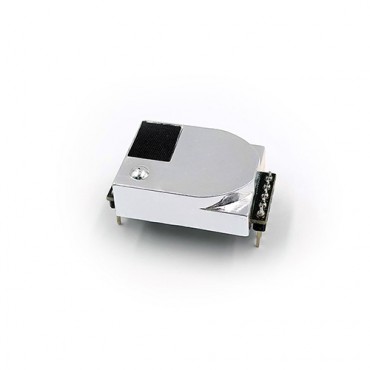Introduction:
FS00303 and FS0306 are sensors designed to monitor the concentration of carbon dioxide (CO2). These sensors operate on the solid-state electrolyte principle, offering a solution to the issue of interference from water vapor commonly encountered in infrared CO2 sensors. They provide high stability and excellent environmental adaptability, making them particularly suitable for use in special environments such as agricultural greenhouses, breeding ponds, tunnels, and mines.
Specification:
| Specification | Parameter |
| Detected Gas | CO2 |
| Detected Range | 400~5000PPM |
| Solution | 1ppm |
| Operating Voltage | DC 4.5~5.5V |
| Detected Accuracy | ≤±10% Reading |
| Output Method | Default: UART (3.3V_TTL level) |
| Optional: IIC(3.3V_TTL level) | |
| Warm-up Time | 3min |
| Operating Current | <100mA(@5V Power Supply) |
| Operating Temperature | -20~60℃ |
| Operating Humidity | 15~95%RH (No Condensation) |
| Storage Temperature | -30~80℃ |
| Product Weight | 15g |
| Life Spam | 10 Years |
Features:
10 years service life: The sensors have a long operational lifespan, ensuring reliable performance over an extended period of time.
Long-term data stability without drift: They maintain stable and accurate measurements without experiencing drift in data, providing reliable monitoring capabilities.
Resistant to water vapor interference: The solid-state electrolyte principle mitigates the impact of water vapor, allowing for accurate CO2 measurements even in the presence of moisture.
Strong environmental tolerance: The sensors exhibit robustness and adaptability to various environmental conditions, ensuring consistent and accurate CO2 monitoring.
Suitable for special environments: FS00303 and FS0306 sensors are well-suited for use in agricultural greenhouses, breeding ponds, tunnel systems, mining operations, and other specialized environments that require precise CO2 monitoring.
These solid-state electrolyte sensors offer enhanced performance and reliability, enabling effective monitoring of carbon dioxide levels in challenging environments.














